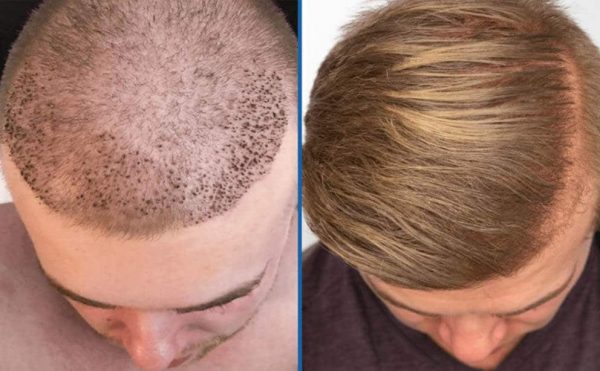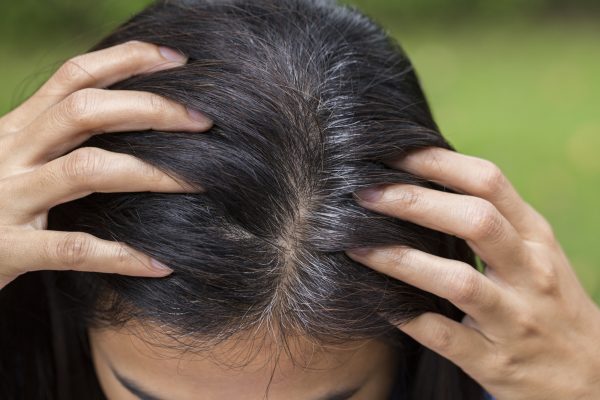The belief that wearing a hat promotes hair loss, like other hair loss myths, is not supported by genuine evidence. However, it is a tenacious fallacy that has persisted for decades.
We’ve discussed what causes hair loss and why it’s perfectly acceptable to wear a hat if you’re losing your hair.
We’ve also included tried-and-true, science-backed solutions for treating hair loss and protecting your hair from the consequences of male pattern baldness.
Do Hats Lead to Hair Loss?
Let’s get started. No, wearing a hat does not usually result in hair loss. In truth, no credible scientific data demonstrates that wearing a hat contributes to hair loss. Anything you put on your head, including hats, may strain on your hair roots.
Androgenetic alopecia, often known as male pattern baldness, is the most frequent kind of hair loss in males.
Male pattern baldness is caused by a mix of genetic and hormonal variables, such as susceptibility to the hormone dihydrotestosterone, or DHT.
DHT is produced by your body as a consequence of testosterone, the principal male sex hormone.
If you are genetically predisposed to DHT sensitivity, this hormone can adhere to your hair follicles and cause progressive damage, eventually preventing them from forming new hairs.
We’ve discussed this process in further depth below and in our guide on DHT and the hair loss process.
Is it true that wearing a hat causes hair loss? There are several urban legends surrounding hair loss, with people blaming anything from sun exposure to stress, sleep patterns, and hairstyle products for their receding hairlines.
Because wearing a hat has no effect on your DHT levels, there’s no reason to believe it contributes to hair loss.
So, do hats cause baldness?
In a nutshell, no. However, because wearing a hat can mess up your hair, it may highlight some indications of hair loss.
Excessive hair shedding, for example, is one of the most prevalent early indications of hair loss.
While it is typical to lose 50 to 100 hairs every day, persons who suffer from hair loss may shed substantially more.
If you’re starting to lose hair, you could discover stray hairs inside your hat when you take it off.
While it may appear that your hat is causing you to lose hair, this is only a coincidence. If stray hairs do not settle inside your hat, they will accumulate on your pillowcase, in your shower drain, or in other places.
Another reason many people equate hat-wearing with hair loss is that wearing a hat can cause your hair to seem flat and unkempt, especially if you wear it for an extended period of time.
When your hair is messed up, factors like a receding hairline or baldness around the crown (the top of your head) might become more evident, highlighting your hair loss.
This, like the previous instance, does not imply that your hat is causing hair loss. It may merely make a receding hairline or other indicators of hair loss more visible.
Hat Wearing and Hair Loss Research
Surprisingly, some study suggests that wearing a hat may lower your chance of hair loss over the course of your life.
Researchers analyzed 92 identical male twins to measure the degree of their hair loss as well as the variables that may play a role in the hair loss process in a study published in the journal Plastic and Reconstructive Surgery.
The researchers discovered that some characteristics, such as smoking and the prevalence of dandruff, were linked to a greater degree of frontal hair loss (hair loss around the hairline).
They also discovered that some other characteristics, such as a higher BMI and testosterone levels, were linked to less hair loss around the hairline.
Wearing a hat was one of these variables. Contrary to popular belief, hat-wearing twins were less likely than non-hat-wearing twins to experience severe frontal hair loss.
The True Cause of Hair Loss
As we briefly explained above, dihydrotestosterone, or DHT, is the cause of male pattern baldness (the sort of hair loss that forms a bald area around your head or a receding hairline).
DHT is a male steroid hormone that your body naturally produces as a consequence of testosterone.
DHT is an important hormone that plays a significant role in the development of your male secondary sex characteristics during infancy and adolescence.
DHT, like testosterone, is responsible for the development of your genitals, the formation of your bone structure, and the stimulation of the growth of your body, facial, and pubic hair.
However, as men age, DHT becomes less of an important hormone and, for some, an inconvenience.
DHT encourages the growth of your prostate as an adult, the function of your sebaceous glands (the oil-producing glands within your skin that contribute to acne), and, in some men, male pattern baldness.
DHT, in particular, can attach to receptors in your scalp, causing your hair follicles to progressively shrink through a process known as shrinkage.
These follicles eventually cease generating new hairs, resulting in anything from slight thinning to severe hair loss that involves nearly your whole scalp.
Because not everyone is equally vulnerable to the effects of DHT, some men shed hair early in childhood while others can keep an absolutely faultless hairline far into old age.
Although male pattern baldness is the most prevalent cause of male hair loss, other factors can also contribute to hair loss.
For example, continuous stress, a severe infection, or sickness that induces a fever can all result in telogen effluvium, a kind of hair loss.
This kind of hair loss typically manifests as widespread thinning that affects your entire scalp, as opposed to the receding hairline or bald patch seen in male pattern baldness.
Telogen effluvium hair loss is typically transitory, which means you’ll regrow whatever hair you’ve lost once the underlying cause is addressed.
Certain medical conditions, such as tinea capitis (scalp fungus) and alopecia areata, can also cause hair loss.
Our guide on the many types of hair loss goes into further depth about how these types of hair loss might manifest.
Simply told, wearing a hat is not to blame for your hair loss. Instead, male pattern baldness is the most likely cause of your hair loss, which is caused by a combination of DHT’s actions and your genes.
The Benefits and Drawbacks of Wearing a Hat
Although wearing a hat will not cause hair loss, there is no evidence that wearing a hat is beneficial to your hair in general.
Overall, wearing a hat has both benefits and drawbacks. A wide-brimmed hat protects your face and neck from the sun, reducing your risk of sunburn and developing skin cancer.
When it comes to your hair and skin health, though, wearing a hat too frequently – or wearing a hat that hasn’t been properly cared for – isn’t necessarily a good thing.
When you wear a hat in hot weather or while exercising, sweat can accumulate inside the hat and potentially hurt your scalp.
When perspiration interacts with germs and sebum on your skin, it can block pores and cause acne outbreaks.
To avoid this, it’s critical to wash hats, headbands, and other apparel worn on your head on a regular basis.
While there is no proof that wearing a cap too tightly restricts blood flow to your hair follicles, it might irritate your skin.
To avoid this, make sure to relax your hat’s adjustable snap fastening so it doesn’t cut into or scrape against your skin.
Are you seeing thinning hair?
According to a study published in the journal Dermatologic Surgery, 16% of men aged 18 to 29 and more than 50% of individuals in their 40s had moderate to complete male pattern baldness.
If you start to see indications of hair loss, it’s critical to act promptly to prevent it from worsening.
Male pattern baldness can be treated. The FDA-approved drugs minoxidil and finasteride are now the most effective strategy to treat hair loss.
These two drugs work in distinct ways to prevent hair loss. Minoxidil is a topical therapy that promotes hair growth, whereas finasteride is an oral medicine that prevents your body from converting testosterone to DHT.
We sell minoxidil and finasteride online, and both hair loss drugs are offered in our Hair Power Pack.
DHT-blocking shampoo and biotin are two more hair care items that can assist encourage healthy hair growth. These items are available in our comprehensive range of hair loss treatments.
Wearing a hat protects your face and neck from the sun, lowering your chances of suffering sunburn or skin cancer.
While wearing a filthy, sweat-soaked hat is bad for your skin, there is no scientific proof that hats cause hair loss.
In summary, if you wear a hat, you shouldn’t be concerned about it damaging your hairline or causing a bald patch.
Just be sure to wash your hat on a regular basis to keep perspiration, oils, and other contaminants from accumulating inside the cloth.


